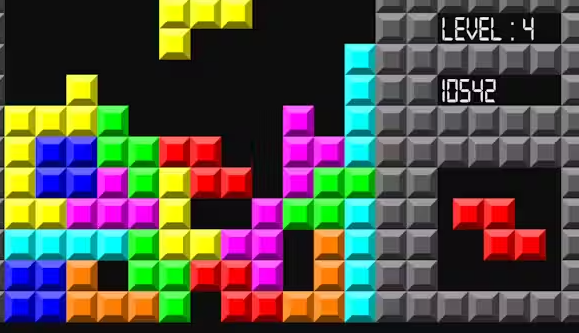
Do Preschool Girls Really Believe “Boys Are Better at Building”?
Picture this: a group of preschoolers are sitting on the floor, each with a pile of building blocks. Some kids stack carefully, others create castles with daring towers. A teacher watching might wonder—are the girls less likely to take risks with the blocks? And if they are, is it because even at age five, they’ve already absorbed the stereotype that “boys are better at building things”?
That question has haunted educators and parents for years, especially given how early children start picking up social messages. After all, research has shown that by elementary school, many girls already believe math and engineering are “boy” subjects. But a new study published in Frontiers in Psychology throws a curveball: preschool girls didn’t show strong stereotypes about spatial ability at all—and when they did, the effect was surprisingly different than expected.
Why Spatial Skills Matter More Than You Think
Before we dive into the findings, let’s talk about why this matters. Spatial skills—like being able to mentally rotate objects, picture a map in your head, or imagine how puzzle pieces fit together—aren’t just “nice extras.”
They’re the foundation for future success in STEM fields: science, technology, engineering, and math. Kids who do better on spatial reasoning tasks are more likely to pursue—and succeed—in these careers. So when parents, teachers, or society send subtle (or not-so-subtle) signals that girls “aren’t as good” at these skills, it can have long-lasting ripple effects.
That’s why the University of Regensburg team set out to test whether these stereotypes already show up in preschool girls—and whether they affect performance on spatial tasks like mental rotation.
What the Researchers Did
The study involved 52 girls between the ages of 5 and 6.75. Each child took part in three playful tasks:
- A memory game (Corsi block task): Kids tapped out patterns on a screen to test their visuospatial working memory (essentially, how well they can hold and manipulate visual information in their minds).
- A picture-sorting game (Implicit Association Test): This measured whether the children unconsciously associated “boys” or “girls” with toys that promote spatial skills (like puzzles and building blocks).
- An animal rotation game: Kids looked at pictures of animals rotated at different angles and had to match them—testing their mental rotation ability.
The researchers expected to find that stronger “boys = better at building” stereotypes would predict weaker performance in girls on the rotation task. But the results told a very different story.
The Results That Made Everyone Stop and Think
Here’s what they discovered:
- No strong stereotypes: On average, the girls did not exhibit a consistent bias, linking boys more strongly to spatial ability than girls.
- When stereotypes appeared, they didn’t hurt performance: Girls who did lean toward associating spatial ability with boys actually performed better on the rotation task—not worse.
- Memory still matters most: The clearest predictor of success was working memory—the girls who could hold more information in mind did better on the rotation tests, regardless of stereotypes.
This is a head-scratcher for researchers. For years, studies in older kids and adults have shown that stereotype threats (like reminding girls “boys are better at math” before a test) can tank performance. However, in these preschoolers, the effect didn’t appear in the same way.
Why This Matters for Parents and Schools
At first glance, you might think, “Great—preschool girls aren’t carrying harmful stereotypes yet.” But here’s the catch: this could mean that preschool years are a golden window of opportunity. If biases aren’t set in stone at five, parents and teachers can help shape a child’s sense of what’s possible before the stereotypes creep in.
That means:
- Expose all kids to spatial play early. Building blocks, puzzles, and hands-on play should be for everyone—not just a “boy toy” aisle.
- Watch your language. Subtle comments like “he’s such a little engineer” or “she’s so creative with art” can reinforce the wrong message.
- Boost memory and problem-solving. Games that challenge kids to hold patterns in mind (think “Simon Says,” memory cards, or even dance routines) build working memory, which is strongly tied to spatial ability.
The Big Picture: Rethinking Stereotypes
This study doesn’t “disprove” that gender stereotypes affect learning. Instead, it highlights something powerful: stereotypes might not fully take hold until later in childhood. And that means the preschool years may be our chance to give every child a fair start.
Think of it this way: if stereotypes are like weeds, preschool is the moment when they first take hold. Parents and educators are the gardeners who can keep harmful messages from taking over.
Practical Takeaway
The takeaway is simple but urgent: don’t wait until middle school to encourage girls in STEM. By then, stereotypes may already be stronger. Instead, use the early years to build confidence in spatial play, celebrate problem-solving, and make it clear—subtly and explicitly—that these skills belong to everyone.
Let’s Talk About It
This research is more than academic—it’s a call to action for parents, teachers, and the broader community. What we say and do now can change the future of STEM.
- What’s the biggest mental health or learning challenge you see in schools today?
- How can schools better support all students’ confidence in subjects like math and science?
- What’s one moment when a child surprised you by breaking a stereotype?
Drop your thoughts in the comments or share this blog with another parent or teacher. The earlier we start these conversations, the better.



